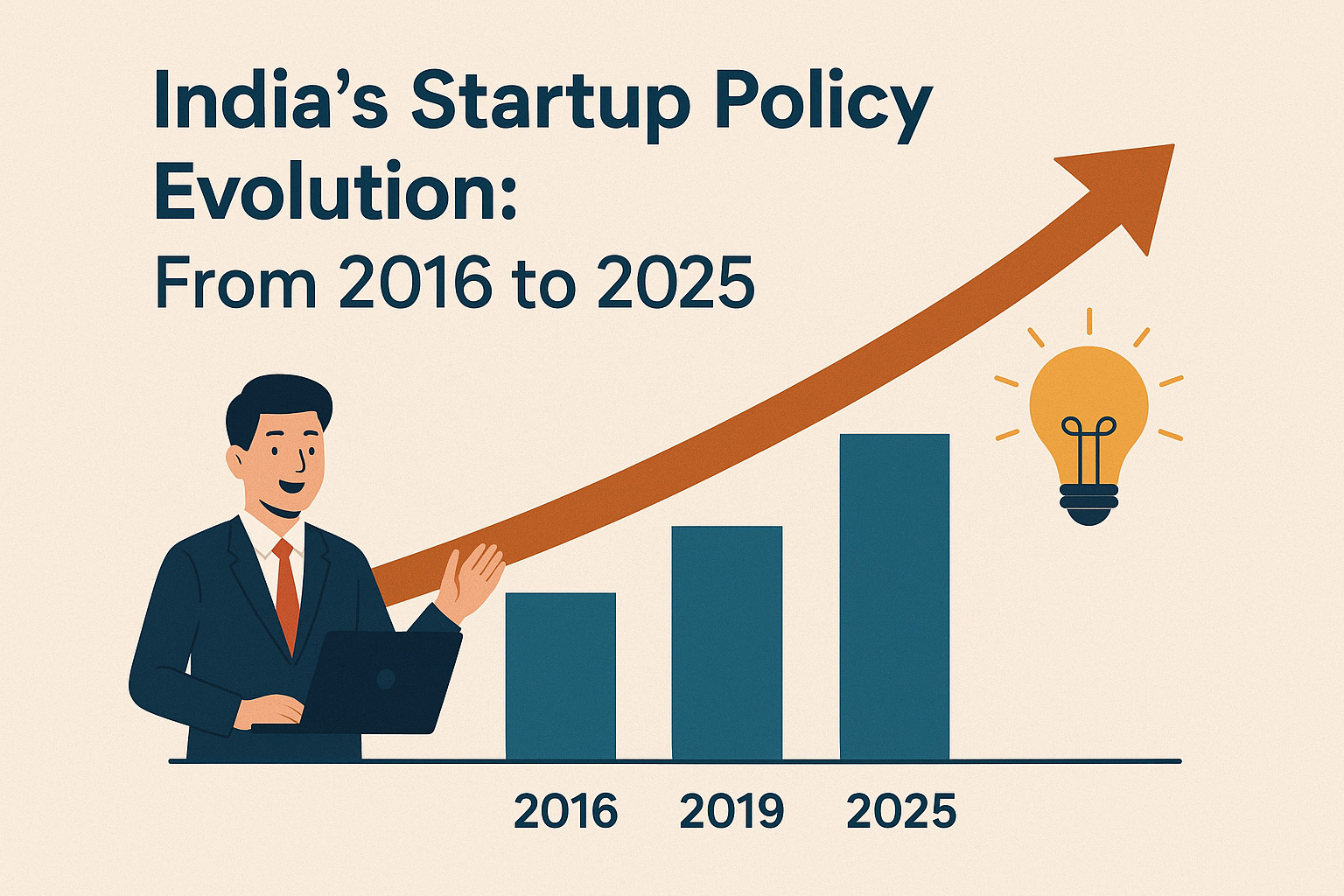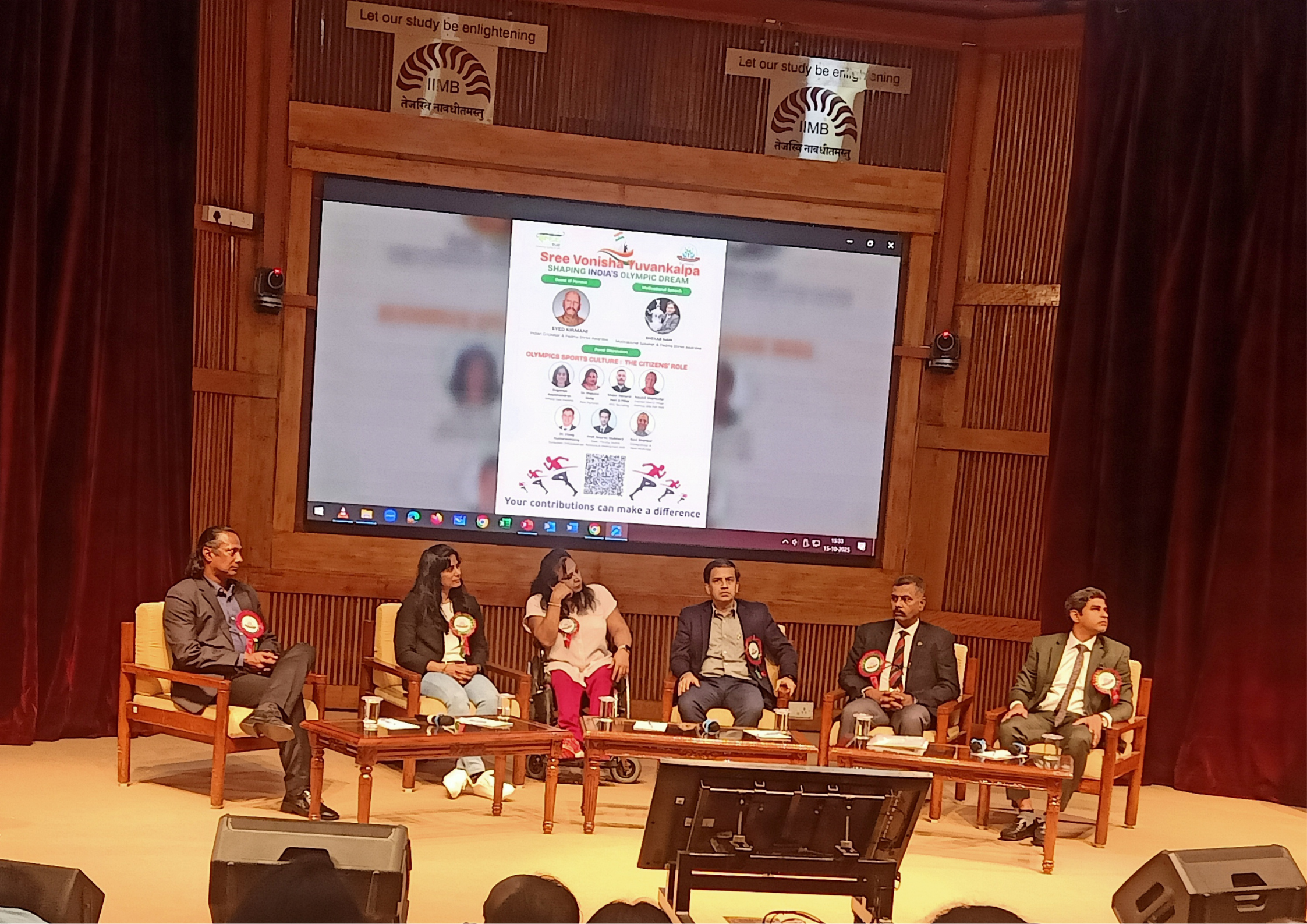India’s Startup Policy Evolution: From 2016 to 2025

When the Startup India initiative was launched in January 2016, it wasn’t just a new government policy — it was the birth of a national vision. For the first time, entrepreneurship was placed at the center of India’s economic growth narrative. Nearly a decade later, the policy ecosystem has evolved from a symbolic movement into a structural framework that nurtures one of the world’s largest startup landscapes.
Between 2016 and 2025, India’s startup policy journey mirrors the country’s broader transformation — from aspirational beginnings to a maturing, globally competitive innovation economy.
The 2016 Vision: From Policy to Movement
In 2016, India had fewer than 500 officially recognized startups. The environment was promising but unstructured. Founders often had to navigate complex compliance systems, limited funding channels, and weak institutional support.
The launch of Startup India changed that paradigm. The government’s blueprint revolved around three foundational goals:
- Simplifying regulatory processes,
- Supporting funding and incubation, and
- Building a culture of innovation and risk-taking.
Through this policy, entrepreneurship became a legitimate career choice. DPIIT’s recognition system created a clear identity for startups, allowing them to access benefits such as tax exemptions, patent fee reductions, and easier public procurement eligibility.
The result was an explosion of activity. Within just five years, India had over 60,000 registered startups, covering every state and union territory — a sign that innovation had broken out of its urban bubble.
The Mid-Phase (2018–2020): Strengthening the Pillars
By 2018, it was clear that the initial wave of enthusiasm needed deeper institutional frameworks. This phase saw the launch of major policy interventions to sustain the momentum:
1. Fund of Funds for Startups (FFS)
Administered by SIDBI, the ₹10,000 crore FFS became a cornerstone of India’s financing structure. Rather than directly funding startups, it invested in venture capital funds, which then backed early- and growth-stage startups. This approach blended public trust with private-sector efficiency.
By 2020, more than ₹5,000 crore had been committed to over 80 VC funds, catalyzing private investment worth several times that amount.
2. State-Level Startup Policies
Following the national initiative, several states — Karnataka, Gujarat, Kerala, and Telangana among them — launched their own startup policies. This federal approach allowed regional ecosystems to specialize: for instance, agritech in Punjab, mobility in Maharashtra, and AI in Karnataka.
3. Taxation and Ease of Doing Business Reforms
The government introduced a 3-year tax holiday for eligible startups, alongside capital gains exemptions and faster IP filings. India’s global ranking in the Ease of Doing Business Index climbed steadily, partly due to these startup-friendly reforms.
By 2020, India’s startup landscape was not only growing but also diversifying — with deep-tech, healthtech, and social-impact ventures joining traditional sectors like fintech and e-commerce.
The COVID-19 Turning Point: Resilience and Reinvention
The global pandemic in 2020 was a major inflection point. Many feared that the startup ecosystem would face mass failures. Instead, it demonstrated remarkable resilience.
In response, the government adapted quickly:
- Atmanirbhar Bharat Abhiyan (Self-Reliant India) encouraged startups to innovate for domestic manufacturing and digital solutions.
- The Startup India Seed Fund Scheme (SISFS) was launched in 2021 with a corpus of ₹945 crore to provide early-stage capital for idea-to-market journeys.
- Startup India’s digital platforms expanded online mentorship and networking — bridging the physical divide created by lockdowns.
This period also saw the rise of homegrown unicorns. Despite the crisis, India added more than 40 unicorns in 2021 alone, signaling a fundamental shift from survival to scalability.
Post-2021: Policy Maturity and Global Outlook
From 2021 onward, India’s startup policies became more data-driven, inclusive, and globally integrated. DPIIT began to use analytics to track performance, monitor sectoral growth, and fine-tune interventions.
1. Startup India Hub 2.0
The digital one-stop portal evolved into a comprehensive ecosystem platform connecting over 1 lakh startups, 500 incubators, and 15,000 mentors. The addition of the MAARG platform (Mentorship, Advisory, Assistance, Resilience, and Growth) enabled AI-driven founder–mentor matching across sectors.
2. International Collaboration
India started positioning itself as a global innovation partner. Through initiatives like Startup20 (under India’s G20 Presidency) and bilateral programs with Japan, Singapore, and the UAE, Indian startups began accessing global markets, capital, and technology partnerships.
3. Focus on Inclusion
The 2023–2025 period has emphasized inclusive entrepreneurship — particularly women founders, rural innovators, and Tier-2/Tier-3 ecosystems. Over 50% of DPIIT-recognized startups now come from non-metro regions, demonstrating a structural shift toward grassroots innovation.
Initiatives such as the Women Entrepreneurship Platform (WEP) and Stand-Up India have expanded the gender diversity of the founder base. India’s startup policy now views inclusion not as a social goal but as an economic multiplier.
Policy Evolution: Key Milestones (2016–2025)
| Year | Key Policy Development | Impact |
|---|---|---|
| 2016 | Launch of Startup India; DPIIT registration begins | National startup identity created |
| 2017 | Tax exemptions, IP support, and Fund of Funds rollout | Easier compliance and funding pathways |
| 2018 | State startup policies & incubator networks expand | Localized innovation ecosystems emerge |
| 2020 | Atmanirbhar Bharat; COVID-19 support | Resilience-building measures introduced |
| 2021 | Startup India Seed Fund Scheme | Early-stage capital boost |
| 2022 | India crosses 100 unicorns | Validation of ecosystem maturity |
| 2023–25 | Global outreach via Startup20 & inclusive policies | Global competitiveness and diversity |
The Policy Mindset Shift
What truly defines the 2016–2025 journey is not just the number of policies introduced, but the mindset shift within government and society.
The Indian bureaucracy, once seen as rigid and risk-averse, now actively collaborates with founders. DPIIT officials engage directly with startup communities, policy consultations are more transparent, and feedback loops are becoming institutionalized.
This participatory governance model — where policymakers, founders, and investors co-create solutions — is India’s silent competitive advantage.
Challenges and Course Corrections
Yet, the path hasn’t been without friction. Founders still face issues with:
- Delayed fund disbursement from public schemes,
- Complex compliance norms in cross-border taxation and ESOP regulation, and
- Inconsistent policy execution across states.
Moreover, many startups, especially in deep-tech and biotech, still rely heavily on imports for hardware and lab access — a reminder that India’s innovation infrastructure is still catching up with its ambitions.
To address these challenges, DPIIT and NITI Aayog are working on Startup India 2.0, expected to introduce simplified compliance frameworks, credit guarantee programs for venture debt, and incentives for sustainable technologies.
The Road Ahead: Startup India 2.0 and Beyond
By 2025, India’s startup policy ecosystem is moving into its third phase — consolidation and global positioning. Three key themes define this next frontier:
1. Sustainability and Green Startups
The focus is shifting toward climate innovation — renewable energy, circular economy, and carbon-neutral manufacturing. Expect policy incentives for cleantech and sustainability-driven ventures.
2. Deep-Tech and R&D Support
To compete globally, India must move from software innovation to scientific breakthroughs. Initiatives like NIDHI (National Initiative for Developing and Harnessing Innovations) and the upcoming Deep Tech Policy (2025) are designed to bridge the research-to-market gap.
3. Global Market Access
The future will see India building dedicated Startup Embassies and cross-border innovation corridors — helping Indian founders establish international footprints without relocating headquarters abroad.
Conclusion: From Policy to Ecosystem
The story of India’s startup policy evolution from 2016 to 2025 is one of vision turning into architecture. What began as a campaign has become a continuously learning ecosystem, balancing state support with private innovation.
India today ranks third globally in startup ecosystem size, behind only the US and China — yet its defining strength lies in inclusivity and frugality. Indian entrepreneurs build for scale with efficiency, a trait born out of necessity and nurtured by smart policy.
As we move into the next decade, the role of the government will gradually evolve from a promoter to a partner — enabling the private sector to take the lead. The ultimate measure of success will not be in how many startups are registered, but in how many ideas become institutions that define India’s economic future.




